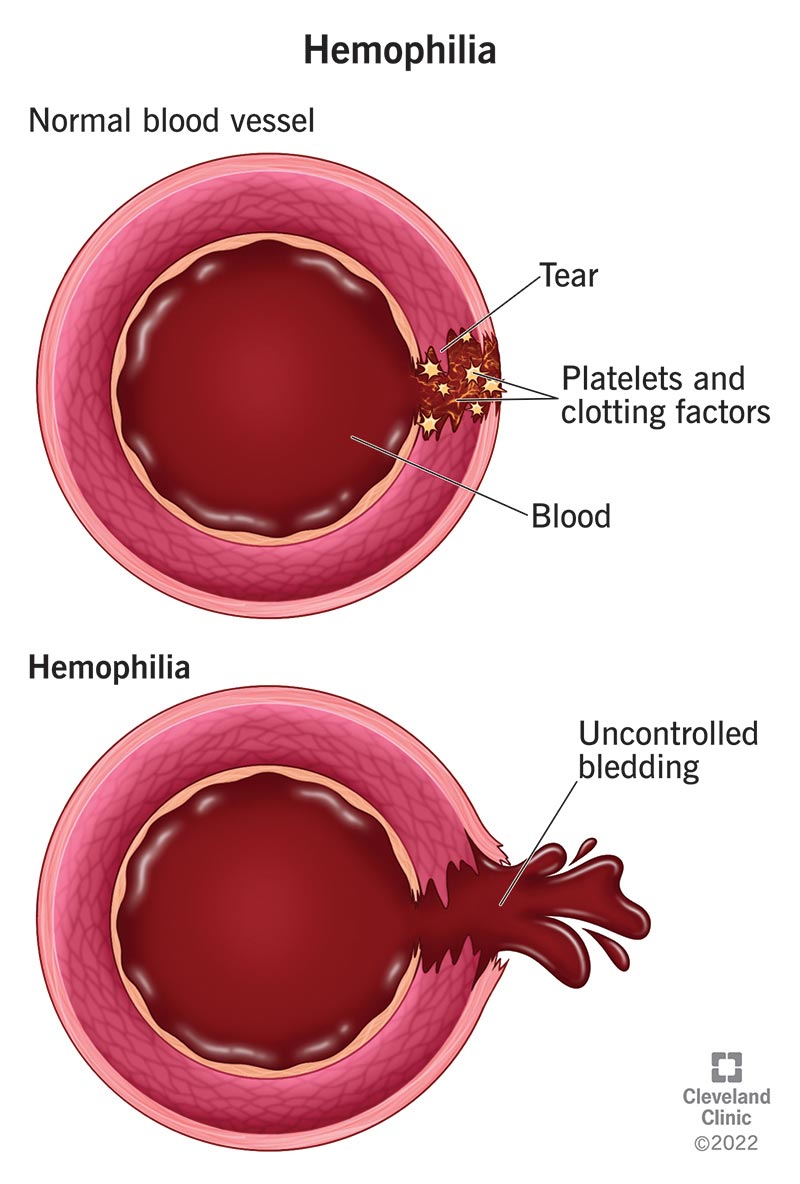Overview Of Hemophilia A
Hemophilia A is a rare genetic bleeding disorder caused by a deficiency or malfunction of clotting factor VIII, a protein essential for blood coagulation. This deficiency impairs the body's ability to form stable blood clots, leading to prolonged or spontaneous bleeding. It predominantly affects males due to its X-linked inheritance pattern, though females can be carriers and sometimes exhibit mild symptoms. Hemophilia A varies in severity, with severe cases resulting in frequent, spontaneous bleeding episodes, particularly into joints and muscles, leading to long-term complications if untreated.
Symptoms of Hemophilia A
- Symptoms of Hemophilia A vary depending on the severity of the condition. In mild cases, bleeding may only occur after surgery or significant trauma, while in moderate to severe cases, spontaneous bleeding episodes are common. Key symptoms include: - Prolonged bleeding after injuries or surgeries. - Spontaneous bleeding into joints, causing pain, swelling, and reduced mobility. - Muscle hematomas, which can lead to nerve compression. - Frequent nosebleeds or bleeding gums. - Blood in urine or stool from internal bleeding.
Causes of Hemophilia A
- Hemophilia A is primarily caused by mutations in the F8 gene, which provides instructions for producing factor VIII. The mutation leads to either a complete absence or a reduced functional level of this clotting factor. While the disorder is typically inherited, approximately 30% of cases result from spontaneous mutations without a family history. External factors such as liver disease or the development of antibodies against factor VIII can exacerbate the condition or mimic its symptoms.
Risk Factors of Hemophilia A
- - Genetics: A family history of hemophilia significantly increases the likelihood of inheriting the disorder. - Gender: Males are at higher risk due to the X-linked pattern of inheritance. - Spontaneous Mutations: Individuals without a family history can still develop the condition due to new genetic mutations.
Prevention of Hemophilia A
- While the genetic nature of Hemophilia A means it cannot be prevented, early diagnosis, genetic counseling, and proper treatment can minimize complications. Carrier testing and prenatal screening can help families understand the risks and plan for the management of potential cases. Prophylactic factor VIII infusions can prevent bleeding episodes and reduce the risk of long-term complications.
Prognosis of Hemophilia A
- With proper treatment and adherence to prophylactic regimens, individuals with Hemophilia A can lead relatively normal lives. Advances in medical care have significantly reduced mortality and morbidity associated with the disorder. However, untreated or poorly managed cases can result in chronic joint damage, reduced mobility, and an increased risk of life-threatening bleeding events.
Complications of Hemophilia A
- - Joint Damage: Repeated bleeding into joints can lead to chronic pain and arthritis. - Inhibitor Development: Some individuals develop antibodies against infused factor VIII, rendering treatments less effective. - Severe Bleeding: Intracranial or gastrointestinal bleeding can be life-threatening if not promptly treated. - Infections: Historically, bloodborne infections like HIV and hepatitis were risks due to contaminated clotting factor concentrates, though modern safety measures have largely mitigated this.
Related Diseases of Hemophilia A
- - Hemophilia B: Caused by a deficiency of clotting factor IX, presenting similar symptoms but requiring different treatment. - Von Willebrand Disease: A bleeding disorder involving von Willebrand factor, which helps platelets stick together. - Acquired Hemophilia: A rare condition caused by the development of antibodies against clotting factors, often associated with autoimmune disorders.
Treatment of Hemophilia A
Treatment for Hemophilia A focuses on replacing the deficient factor VIII through intravenous infusions, which can be administered on-demand during bleeding episodes or prophylactically to prevent bleeding. Advances in recombinant factor VIII products and extended half-life therapies have improved the quality of life for patients. Desmopressin, a synthetic hormone, can stimulate the release of stored factor VIII in mild cases. Gene therapy is an emerging treatment option aimed at correcting the underlying genetic defect, offering hope for a potential cure in the future.
Generics For Hemophilia A
Our administration and support staff all have exceptional people skills and trained to assist you with all medical enquiries.

Aminocaproic Acid
Aminocaproic Acid

Factor VIII
Factor VIII

Aminocaproic Acid
Aminocaproic Acid

Factor VIII
Factor VIII


